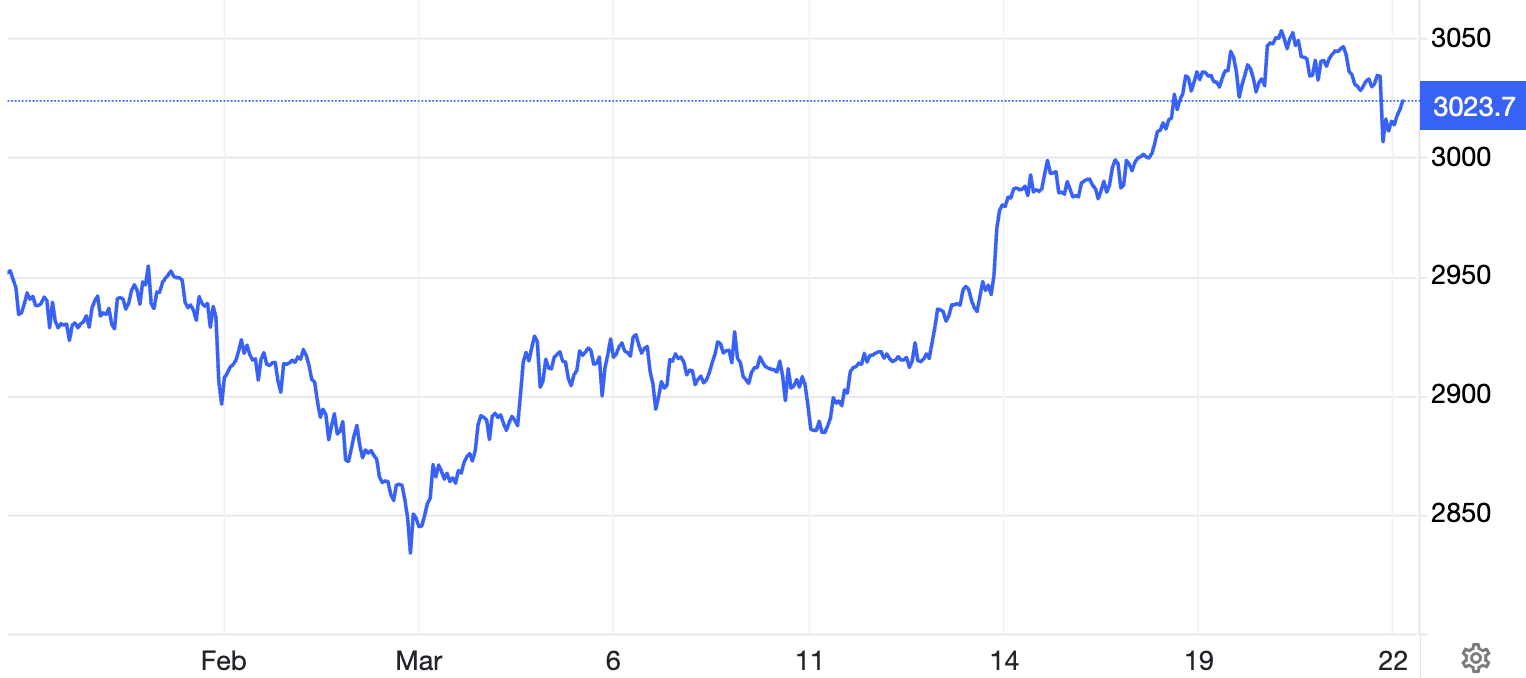The trading week from March 18 to 22 ended with strong fluctuations in the domestic gold market. The price of SJC gold bars at times skyrocketed to a record high of VND104.4 million/tael for selling, before adjusting sharply in the last two sessions of the week. At the end of the week, the buying and selling prices at stores were listed at VND94.4 million/tael (buying), VND97.4 million/tael (selling) , respectively, equivalent to a decrease of VND4.2 million/tael for buying and about VND3 million/tael for selling compared to the historical peak set during the week.
Compared to the end of last week, the selling price of SJC gold bars still increased by 1.6 million VND/tael . However, with a sharp decrease in the purchase price from residents, the buying price has dropped to the lowest level since March 17. Similarly, the price of gold rings has also decreased with the selling price also commonly at 97.4 million VND/tael. Bao Tin Minh Chau alone is listing quite high prices at 96.1 million VND/tael (buy) and 98.6 million VND/tael (sell).
The difference between buying and selling prices widened to VND3 million per tael for SJC gold bars and about VND2.5-3 million per tael for gold rings, much higher than the common level of VND1.5-2 million last month. The market cooled down quickly after becoming very hot after the world gold price surpassed the $3,000/ounce mark, affecting investors' fear of missing out (FOMO).
In the international market, spot gold prices fell more than 1% to around $3,015/ounce in the last session of the week, due to profit-taking pressure and a stronger USD. Gold futures for April also adjusted to $3,028.2/ounce.
 |
| Gold price movements in the past month. |
The dollar recovered to a two-week high, making precious metals more expensive for international investors . But demand for havens remained strong amid escalating conflict in Gaza and concerns about US President Donald Trump's protectionist trade policies.
The US Dollar Index (DXY), which measures the strength of the greenback, has returned to the 104-point mark after three consecutive sessions of gains . The US Federal Reserve's (Fed) monetary policy stance continues to be evaluated by the market after the press conference announcing the interest rate decision on March 20. The Fed kept interest rates unchanged but signaled two cuts this year.
The Fed also highlighted heightened risks to growth, employment and inflation in its updated economic projections.
Assessing the information from the Fed meeting, Mr. Nguyen Duc Khang, Head of Analysis at Pinetree Securities Joint Stock Company, pointed out that the phrase “transitory” inflation is a notable point in the Fed Chairman’s speech because it has not been used for a long time. The last time we heard this phrase was in 2021, when the Fed pumped money to support the economy after Covid. However, that time, the Fed was wrong because inflation was not as “transitory” as the Fed expected.
In addition to keeping interest rates unchanged, the Fed has signaled a gradual easing of its quantitative tightening (QT) policy by reducing the ceiling on the number of US government bonds maturing. Accordingly, the Fed will only allow US$5 billion of US government bonds to mature without reinvestment, a sharp decrease from the previous level of US$25 billion.
Next week, from March 25 to 29, the market will focus on a series of US economic data such as personal spending and income, PCE price index, housing sales, consumer confidence and fourth quarter GDP (final data). In particular, the February PCE report will be closely watched after the Fed signaled that it would keep interest rates unchanged and leave open the possibility of cutting this year.
In addition, preliminary March Purchasing Managers' Index (PMI) data will be released in the US, UK, Eurozone, Japan and India, along with inflation data in Australia, UK, France and Spain, which could shed more light on the macroeconomic picture in many major countries.



































































































Comment (0)